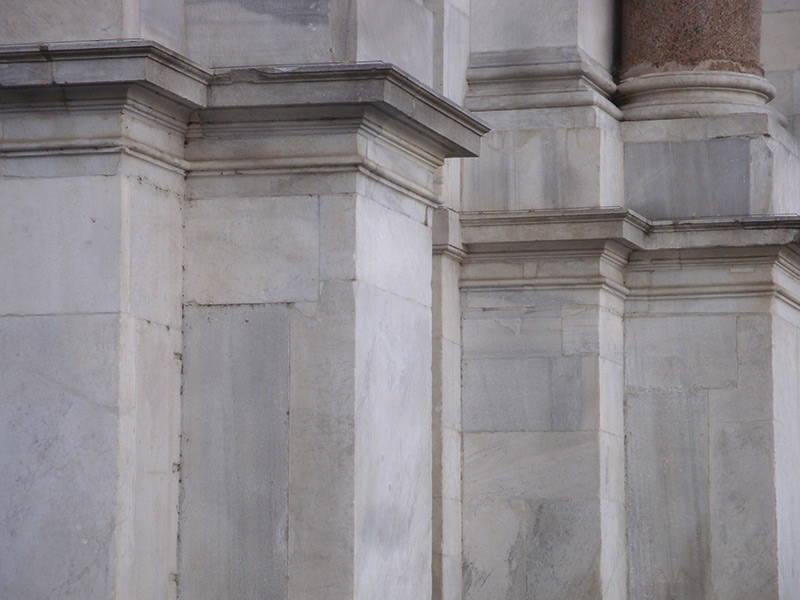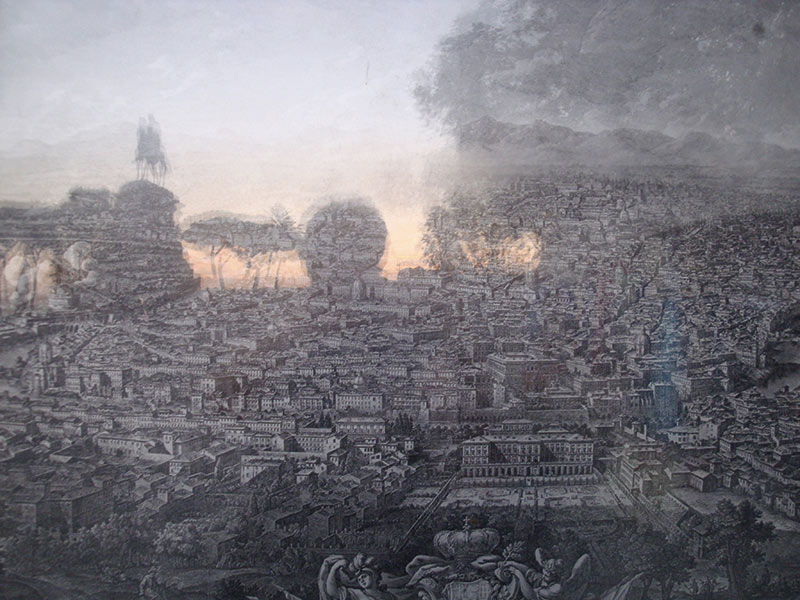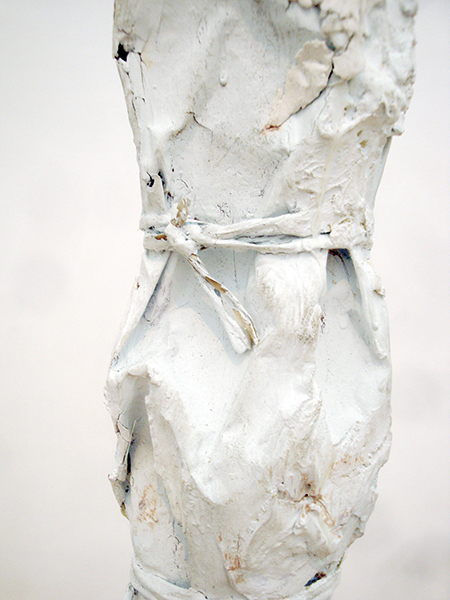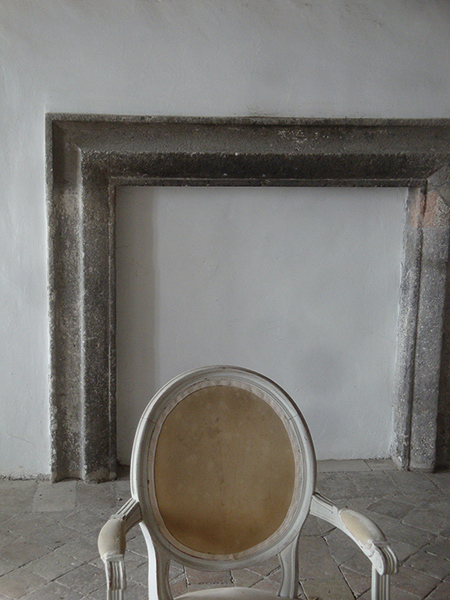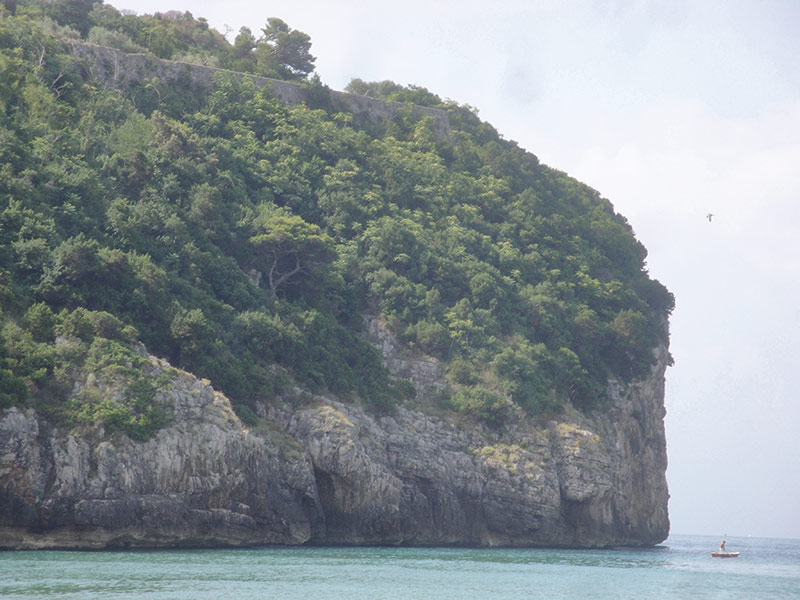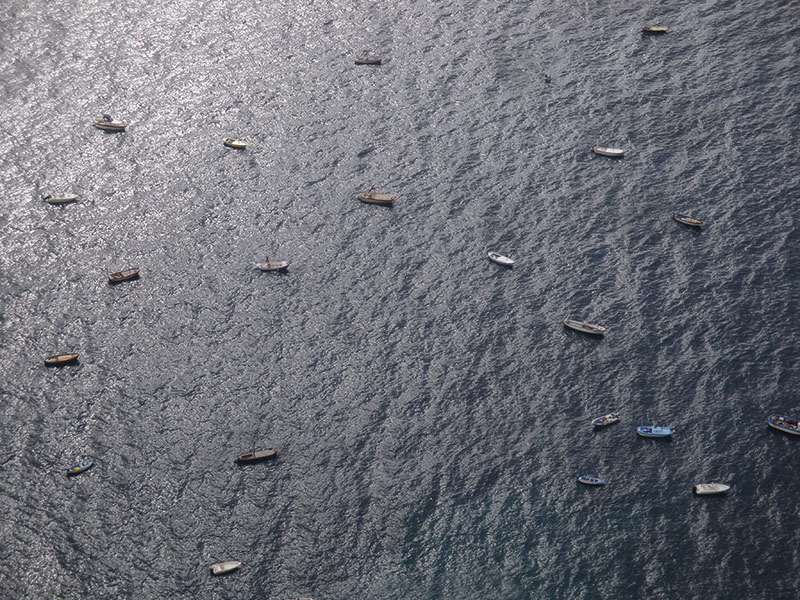[Winter 2020]
It was the word beyond speech.
— Hermann Broch, The Death of Virgil
When the immense drugged universe explodes
In a cascade of unendurable colour
And leaves us gasping naked,
This is no more than the ecstasy of chaos:
Hold fast, with both hands, to that royal love
Which alone, as we know certainly, restores
Fragmentation into true being.
— Robert Graves, Ecstasy of Chaos
Gnarled orbs of yellow.
Like prehistoric fruit
ripened by the Mediterranean sun
in a Mediterranean garden,
abandoned.
— Ewa Zebrowski, Lemons
By James D. Campbell
Since 2014, noted Canadian artist Ewa Monika Zebrowski has been exploring the universe of artist Cy Twombly on both sides of the Atlantic. For those of us who were seduced by Zebrowski’s early Venetian photographs in homage to now-deceased poet Joseph Brodsky, her Twombly studies offer similar sustenance for eye and mind.1 Zebrowski once said that Brodsky’s writing was a catalyst for exploring, in the medium of photography, her own reflections on memory and personal history. So, too, her Twombly images and poems arise from autobiographical incidents and conjure a worthy scaffolding from which we can better appreciate his eloquent gestural high-wire acts of chalkboard-like scratching, chromatic smearing, and pigment clotting.
Twombly lived in Italy for fifty years, and Zebrowski spent time around his studio, his garden, and other cherished places from whence he drew inspiration, and her work richly adumbrates her vision of his rich and enduring legacy. She also spent untold hours looking at hundreds of his Polaroids, which were, for her, understandably something of a revelation. Of course, she had known his work for years. But the Polaroids spoke to her, and eloquently, too. This immersion was but one of the many that led her into the heart of his thinking, which she brilliantly evokes as she shadows him in a sort of parallel narrative fiction in which a gifted interpreter reaches for the stars.
Cy Twombly is a titanic figure in twentieth-century art history. His idiosyncratic practice, in which he combined unforgettable and potent “childish” scribbling with bursts of colour and classical references to art and poetry of antiquity, is widely considered among the finest of the last century. His epic, sage, and lush fandangos of marks are instantly recognizable, poised between Eros and the corporeal, Heaven and Hell, the image and the sign.
Twombly moved to Rome in 1957, and later to Gaeta on the Tyrrhenian coast south of Rome. The move was life-changing and afforded him inspiration and sustenance for his work from a wealth of classical sources and beyond. In 1962 he began a famous cycle of works based on myths, including Leda and the Swan and The Birth of Venus. Myths and mythopoesis were frequent themes of his work in the 1960s.
Twombly once spoke of painting as being “more fusing – fusing of ideas, fusing of feelings, fusing projected on atmosphere.”2 Fusing projected on atmosphere. It’s precisely what Zebrowski does in her conjuration of mood as she moves about Twombly’s memory, environment, and work. If that work can be understood as a sublime encounter with our collective cultural memory, we can see the intrinsic allure for Zebrowski. His many expressions on mythological subjects form an integral and salutary part of that memory. His angelic meta-script with its liminal textuality and pictographic content, underscored by reworking and erasures and striking spontaneity, stands apart from late Modernism.
Zebrowski’s first three works in relation and tribute to Twombly were produced during two residencies at the American Academy in Rome in 2014 and 2015, following extended visits to the Twombly Gallery at the Menil Collection in Houston in 2014. Her time in Rome – a city for which she professes a profound love – allowed her to nimbly and methodically explore Twombly’s Roman landscape. She would spend time at the Twombly Foundation in Gaeta and visit his house in Bassano in Teverina in the company of his son, Alessandro. Although she began with the intention of only taking photographs, she was moved to write poetry. She says, “I was so moved by Twombly’s work that I wanted to have a conversation with him. He became my muse.”3
Zebrowski had various conversations with Nicola del Roscio, who spent his entire adult life assisting and advising Twombly. After Twombly died, in 2011, and del Roscio became the president of the Cy Twombly Foundation, he devoted himself to celebrating and protecting his work and legacy. Del Roscio, who first met Twombly when he was a twenty-year-old university student living in Rome – seventeen years Twombly’s junior – showed an unusual fidelity to the artist for over fifty years. Twombly married Italian baroness Luisa Tatiana Franchetti in 1959, and they welcomed their son Cyrus Alessandro Twombly later that same year. Franchetti, a gifted painter in her own right, led an autonomous life; when she died, in 2010, Twombly was on his own deathbed. The visit to Twombly’s Bassano home in the company of his son was important for Zebrowski, who only then realized that he had once lived in Via Monserrato in Rome, the same street where she had rented rooms while working for the Canadian Embassy (working for the cultural attaché on a special film program) in the 1980s. This strange coincidence delighted her and suggested augury.
For Zebrowski, seeing Twombly’s work exhibited at the Museum of Cycladic Art in Athens, in juxtaposition with sculptures from antiquity, was transformative. She says, “I understood more his attachment and fascination to the past. Myth, Archaeology, Antiquity. When I began taking photos and began thinking about Cy’s world images did not seem enough. I wanted to convey what I was thinking and feeling. So I started to write poems!” These poems figure in Zebrowski’s books dedicated to Twombly, her noble muse.
twombly, italia (2015) was the first of Zebrowski’s Twombly works.4 It is an all-white book that unfolds in an accordion of images and a separate hand-stitched pamphlet, a lean book of poems. The two work in reciprocal harmony yet independently of one another, as a narrative. The images do not illustrate the poems, but each informs the other: a nonlinear presentation about the ephemeral nature of being, and the desire and longing that inhabits us all, unresolved. When the book is first opened, it appears white, like a monochrome blank canvas, a space of meditation and conjuration.
The publication was produced with the generous collaboration of the Nicola del Roscio Foundation. Zebrowski wanted to create a narrative about Twombly’s sojourn in Italy, in terms of a kind of legendary myth, with some element of truth. As she says of Twombly, “He loved gardens and the sea, and drew inspiration from the beauty, history and nature around him. He loved poetry and mythology and interwove them into his art.” Her responsive poems address questions of time and absence, memory and remembrance, fleeting moments of recognition and passage. The photographs, in the form of visual fragments inspired by Twombly’s own photographs, echo his life in Italy through the filter of her receptive lens. Images recall the landscape that fuelled both his life and his art production. MoMA, the Menil Collection, and the Art Institute of Chicago have all acquired copies, as have many colleges and universities. Zebrowsky is also tracking Twombly’s life in Italy in BASSANO IN TEVERINA (2016), the twenty-five constituent prints of which record what Zebrowski calls “a kind of pilgrimage.”5 She recounts, “We arrived in a small town, a large stone house on a hill. We entered in silence. I was not sure what I would find or how I would feel to walk through the rooms, his son by my side. I was moved to see the empty spaces where Twombly had lived and worked. I could feel the residue of time, and the loss. BASSANO IN TEVERINA is about absence and loss, and the ephemeral nature of being.”6
Next came a bouquet for cy (2017).7 This book, with its ten exquisite photographs and a single poem, “Polaroids,” continues her investigation and evocation of a life lived. Twombly loved flowers and photographed them often, and Zebrowski dilates on their organic vivacity and fateful disintegration with brio. Zebrowski then published the remarkable The White Sculptures (2019), a study of metamorphosis that pays tribute to the Twombly’s lifelong production of sculptures.8 However, after 1976 he produced particularly arresting sculptures, lightly painted in white and possibly suggestive of classical forms. Made from flotsam and jetsam that he had collected over time, laden with classical references and elegiac in tone and tenor, the sculptures are haunting. Zebrowski says, “The sculptures moved me in their delicate, humble beauty. They were displayed in a small room to the right of the main entrance. The room felt like a chapel, a sanctuary, a place to contemplate, to meditate. Somehow, in their whiteness, they seemed to make one strong statement – a statement about antiquity, about history, about transience. The white sculptures float in my imagination like delicate ghosts.”
Zebrowski’s current project, Roman Notes, is a series of images that dilate on Zebrowski’s meandering journeys through Rome and the countryside. They also touch on Twombly’s life in Italy peripatetically throughout, and the text pieces derived from his quotations are treated and presented visually as if they were inscriptions or epigraphs. The twenty-five photographs (more may be added) are given equal weight, all printed the same size whether a detail or a landscape. The book may be divided into chapters (with a forty-year timeline). There are no people present in any of the images. The images reveal the background of a life lived, experienced on foreign soil. Together, as she says they become the map, the territory.
These works, adulatory and elliptical, pungent and deeply moving, constitute an extended paean to Twombly’s work in painting, sculpture, and photography. The three publications were self-published with design collaboration by Francine Savard and printing by Datz (twombly, italia, and The White Sculptures) and PhotoSynthese (a bouquet for cy).
It is not surprising that Zebrowski would dilate soulfully on time and memory in poems on Twombly’s persona, work, and writing. The eminent literary critic Mary Jacobus is one of the Twombly admirers who think that the writing in his work is important.9 And not just writing for its own sake – no one integrates textuality into artwork with the grace, bravado, and rigour of Twombly – for the scribbled integers often bear the appropriation of lines and whole passages of poetry, which Jacobus believes is central to any comprehensive understanding of his work.
Jacobus had privileged access to Twombly’s personal library, left, after his death in 2011, in his house at Gaeta. His expansive poetry collection runs the gamut from Sappho, Theocritus, Ovid, Virgil, Horace, and Catullus to Edmund Spenser and John Keats, and particularly such Modernists as Ezra Pound, Rainer Maria Rilke, Fernando Pessoa, and the Greek poets C. P. Cavafy and George Seferis. This working collection was a source of many significant lodestones for his work. Compliant inhabitants of his library, the poets were called upon at will to supply Twombly with titles and captions for many paintings. And “entire lines and passages of poetry … are part of his distinctive aesthetic,” as Jacobus says.10 Poetry was Twombly’s lifeblood, and Zebrowski’s poetry seems as natural a response to it as her images do. Both enjoy a subtle apprehension of things seen and savoured, and an equal gravitas, a sense of being folded in and over the brink of simply immeasurable depths.
Zebrowski conjures for me an image already indelibly in mind of the dead painter as a giant chalk figure, like
the Cerne Abbas Giant hill figure near the village of Cerne Abbas in Dorset, England. At fifty-five metres high, it towers over the surrounding landscape like a sentinel, a divine architect of past, present, and future. It depicts a standing nude male figure outlined by shallow trenches dug out of the turf and backfilled with chalk rubble. Although the origin and age of the figure are uncertain, it is often thought to date back to antiquity. Some scholars sought to identify it with a Celtic British figure of the Greek Hercules or some improbable melding of the two.
In any case, it reminds us of Publius Vergilius Maro, usually known as Virgil in English, whom Twombly revered and sacralized. And, of course, by extension, it further evokes the image of the painter himself atop his eyrie on the Italian coast. Virgil was an ancient Roman poet of the Augustan period and dear to Twombly’s heart. He composed three
of the most famous poems in Latin literature: the Eclogues, the Georgics, and the epic, unforgettable Aeneid.
Zebrowski seems to be channelling Twombly’s own several ghosts in these works. She is a supreme poet of the liminal, an imagist of an overwhelmingly subtle and eloquent persuasion. Some of her images are as light as life’s breath exhaled on a pane of clear glass in the cold time of the year; others are darker and more sumptuously summer-deep in their mien. All resonate with an impalpable truth. Zebrowski’s serene obsession has left us with that rarest and most humbling of things: a palimpsest of images as haunting and unforgettable in their own right as Twombly’s timeless, munificent, and calligraphic language. There can be no more fitting accolade for what she has achieved here.
James D. Campbell is a writer and curator who writes frequently on photography and painting from his base in Montreal.
2 Anne Sherwood Pundyk, “Cy Twombly Sculpture,” The Brooklyn Rail, September 2011, https://brooklynrail.org/2011/09/artseen/cy-twombly-sculpture
3 This and other quotations attributed to Zebrowski in this essay come from communications with the artist.
4 twombly,italia is a limited-edition artist book that includes a sequence of ten poems and twenty-one photo- graphs, including two Polaroids by Twombly, used with special permission. It was printed on Munken Print Cream (photographs on 90 g, poems on 70 g) in two hand-stitched accordion books presented in a slipcase edition of seventy. 5 BASSANO IN TEVERINA (2016) is a series of twenty-five archival inkjet prints, printed on Asuka Natural Japanese paper, measuring 20 × 26 inches (for a special edition, 26 × 33 inches) in an edition of
nine.
6 A number of photographs from the BASSANO series were selected for exhibition by British curator and critic David Campany, curator of the Biennale für Aktuelle Fotografie taking place in Mannheim in February, 2020.
7 a bouquet for cy is a limited-edition artist book comprising a poem and ten photographs printed on Moab Entrada 190 g; it is an accordion book presented in a slipcase measuring 5.25 × 4.5 inches, in an edition of twenty.
8 The White Sculptures is a limited-edition artist book comprising a poem and twenty-one photographs in fifty-two pages on Munken Print Cream 70 g, hand stitched and presented in a slip case edition of twenty.
9 See Mary Jacobus, Reading Cy Twombly: Poetry in Paint (Princeton, NJ: PrincetonUniversityPress,2016). 10 Ibid.,1.

